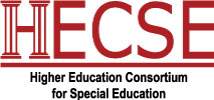Dear Colleagues:
Happy Spring. Yesterday it hit 74 degrees in DC and that is not from all the hot air surrounding the Capitol and the White House! There is no turning back for my daffodils. The President’s FY 2020 budget proposal is out and so a new kabuki dance has begun.
1. President’s Budget Proposal Calls for Big Cuts in Education While Promoting New Programs for Choice
The President’s education budget was released Monday with the tag line of expanding “education freedom.” Sec. DeVos said that:
This budget at its core is about education freedom – freedom for America’s students to pursue their life-long learning journeys in the ways and places that work best for them, freedom for teachers to develop their talents and pursue their passions and freedom from the top-down ‘Washington knows best’ approach that has proven ineffective and even harmful to students.”
Some key highlights of the budget proposal for FY 2020, which begins October 1, 2019, include the following:
- Education discretionary funding is cut by approximately $8.5 Billion or 12% below the FY 2019 level
- The education budget would go from $71.5 Billion in FY 2019 to $64 Billion in FY 2020
- As in last year’s budget proposal, 29 programs are recommended for elimination – totaling $6.7 Billion — including:
- 21st Century Community Learning Centers (after school programs): $1.2B
- Supporting Effective Instruction State Grants (Title II ESSA): $2.05B
- Teacher Quality Partnership Grants (TQP: Title II HEA): $43 M
- Supporting Effective Educator Development (SEED grants): $75 M
- A new tax credit program of $50 B over 10 years is proposed to support a federal tax credit for individual or corporate donations to state authorized scholarship programs for private school tuition and other education activities
- A new $170 million “teacher voucher” program which would give teachers vouchers to purchase professional development
- Elimination of Public Service Loan Forgiveness program
- An additional $60 million for charter schools bringing the total to $500 million
- A new $100 million account for a School Safety State Formula program (this has generated great concern over the possible use of these funds for firearms for school personnel)
- Flat funding for IDEA Part B and ESSA Title I
- All funding for IDEA programs is recommended to be the same as last year
As you know, when it comes to the federal budget the President proposes and the Congress disposes. In other words, the President’s budget is little more than a message about their priorities accompanied by a wish list. The reception from Congress appears to be similar to what it has been the past two years: DOA or “dead on arrival.” One congressional office noted that the budget book would be useful as a door stop, but little more. Since the Administration was unsuccessful in securing support for its new voucher proposals with a Republican controlled Congress, it is virtually impossible to imagine support coming from a Congress where one body is controlled by Democrats.
Below is a chart indicating funding levels proposed for selected programs related to teachers, special education and teacher education:
| FY 2018 funding | FY 2019 Funding | President’s FY 2020 | |
| Title II ESSA | $2.056B | $2.056B | 0 |
| SEED Grants | $75M | $75M | 0 |
| Teacher Quality Partnership | $43M | $43M | 0 |
| IDEA Part B | $12.3B | $12.3B | 12.3B |
| IDEA Personnel Preparation | $83.7M | $87.2M | $87.2M |
| IDEA State Personnel Development | $38.6M | $38.6M | $38.6M |
| IES- Special Ed Research | $56M | $56M | $54M |
My take on “teacher vouchers: http://blogs.edweek.org/edweek/teacherbeat/2019/03/trumps_budget_proposal_teacher_pd_vouchers.html?utm_source=feedblitz&utm_medium=FeedBlitzRss&utm_campaign=teacherbeat
Budget proposal for FY 2020: https://www2.ed.gov/about/overview/budget/budget20/index.html
2. New Resources for Educators
- The National Education Policy Center issued a review of the Institute of Justice’s report 12 Myths and Realities about Private Education Choice Programs. The review, by Christopher Lubienski of Indiana University, considers the merits of the 12 claims and finds them lacking in terms of what the research reveals. See: https://nepc.colorado.edu/thinktank/voucher-myths
- Bellwether Education Partners has issued a report, Preparing Teachers for Diverse Schools: Lessons from Minority Serving Institutions: https://bellwethereducation.org/publication/preparing-teachers-diverse-schools-lessons-minority-serving-institutions
- The National Center on Education and the Economy has a new policy report: Preparing Profession Ready Teachers. The brief compares the practices for preparation and induction in five high-performing countries: Australia (particularly New South Wales and Victoria), Canada (Alberta and Ontario), Finland, Shanghai, and Singapore.
http://ncee.org/wp-content/uploads/2017/02/PreparationPolicyBrief.pdf
3. Opportunity to Showcase Your Effort to Address the Shortage of Special Education Teachers
The American Association of Colleges for Teacher Education (AACTE) is accepting applications to join a new Networked Improvement Community (NIC) which will showcase efforts of schools and colleges of education to address the shortage of special education teachers. Applications are due April 1. This will be an outstanding opportunity to share best practices and best thinking about how the field is addressing this challenge. Below is a link to the Charter for the NIC, the timeline and the application. Check it out!
See: https://www.aacte.org/programs-and-services/nic-reducing-shortage-set

